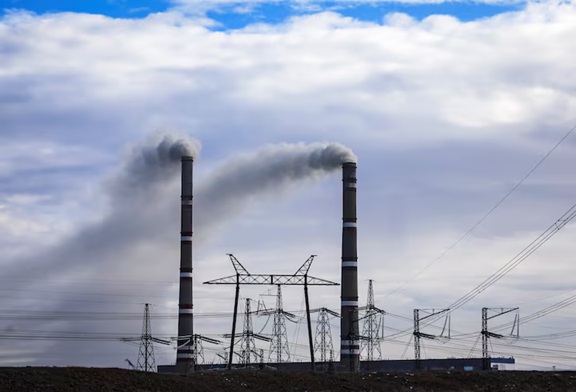Israel deports Greta Thunberg and 170 other Gaza flotilla activists
Thermal coal prices hit 4-year low in Asia as China imports wane: Russell

FILE - Pylons of high-tension electricity power lines are seen next to the GRES-1 coal-fired thermal power plant outside the town of Ekibastuz, Kazakhstan November 7, 2021. Picture taken November 7, 2021. [File photo: Reuters/Pavel Mikheyev]
Asia’s seaborne thermal coal prices have slumped to four-year lows as the region’s heavyweight buyers China, India and Japan all import less of the power-station fuel.
Prices for the main grades of thermal coal shipped from top exporters Indonesia and Australia have been on a sustained downtrend since October last year, and this has accelerated in recent weeks as import volumes have weakened.
China, the world’s biggest buyer of thermal coal, saw imports drop to 22.72 million metric tons in April, down from 23.84 million tons in March, according to data compiled by commodity analysts Kpler.
For the first four months of 2025, China imported 91.56 million tons, down 13.1% from the 105.4 million tons in the same period a year earlier, according to Kpler.
The fall in China’s thermal coal imports comes amid weaker coal-fired generation and record high domestic coal output.
First-quarter thermal power generation in China, which is overwhelmingly coal-fired with only tiny volumes of natural gas, fell 4.7% as both hydropower and renewable generation rose.
Meanwhile, domestic coal production hit a record high of 440.58 million tons in March, up 9.6% on year, helping boost first-quarter output by 8.1% to 1.2 billion tons.
The combination of rising local output and lower coal-fired generation has led China’s domestic coal prices to weaken, with consultants SteelHome assessing thermal coal at the port of Qinhuangdao at 660 yuan ($90.78) a ton last week, a four-year low and down 25% from early October.
The sliding domestic price has reflected in import prices, which have had to drop in order to remain competitive.
Australian coal with an energy content of 5,500 kilocalories per kilogram (kcal/kg), a grade popular with Chinese buyers, dropped to $69.98 a ton in the week to May 2, according to an assessment by commodity price reporting agency Argus.
This was the first time the price had dropped below $70 since May 2021, and it is now 22.5% below the most recent peak of $90.29 from early October.
Indonesian thermal coal has suffered a similar fate, with the 4,200 kcal/kg grade, which is popular with both Chinese and Indian buyers, dropping to $48.42 a ton in the week to May 2, a four-year low and down 7.5% since October.
It’s worth noting that this grade has lost less than Australian coal, and that’s most likely a reflection of some recent strength in India’s imports of thermal coal.
India demand
India imported 15.31 million tons in April, the most since May last year, and up from 14.4 million tons in March.
However, the rebound in March and April from a weak January-February period still means that for the first four months of 2025, India’s thermal coal imports are down 6.7% to 53.33 million tons, according to Kpler data.
The question for the market is whether the recovery in March and April is likely to sustain, and there are some signs that it could.
India’s government has extended a mandate for power plants using imported fuel to operate at full capacity until June 30, a move that will underpin demand for seaborne cargoes.
This move was likely a response to both rising electricity demand and Coal India’s (COAL.NS), opens new tab struggles to meaningfully lift domestic output.
The state-controlled company’s production for the fiscal year that ended on March 31 rose a mere 1% to 781.1 million tons, well short of its initial target of 838 million tons.
But it’s likely that even if India does continue to import robust volumes of thermal coal, it’s unlikely that these will be high enough to offset the loss of demand from China.
Japan, the world’s third-biggest coal importer, also saw lower arrivals in the first four months of the year, with Kpler recording seaborne volumes of 34.71 million tons, down 4.9% from the 36.48 million tons for the same period in 2024.
Japan mainly imports higher-grade coal from Australia, and the weekly index for 6,000 kcal/kg fuel rose slightly to $93.79 a ton in the period to may 2, up from a four-year low of $91.58 the week prior.
The overall picture for thermal coal in Asian seaborne markets is that prices are weakening in line with volumes, a process likely to continue as long as China’s coal-fired generation struggles and the country’s mines produce at high levels.













Leave a Reply
Be the First to Comment!
You must be logged in to post a comment.
You must be logged in to post a comment.